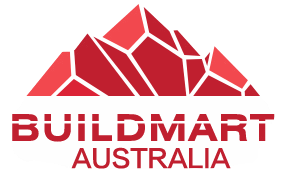Bricks are commonly used in construction as structures and decorations. While all bricks are made of clay – one of the most abundant natural mineral materials on earth, quality bricks require specific qualities in the clay to be used. In brick manufacturing, there are also key requirements to follow for the production of quality bricks that can be used for brick houses.
Choosing the right clay
The perfect clay for bricks should have plasticity for shaping and moulding, sufficient strength to maintain their shape after forming and be able to fuse under appropriate temperatures.
The three main types of clay are surface clays, shales and fire clays. Surface clays, as its name suggests, are found near the surface of the earth. Shales are found below surface clays that have been under high pressure and nearly hardened into slate. Fire clays are found the lowest of all clays and have refractory qualities.
Bricks are a mixture of the three different clays to balance their chemical composition and physical properties. Because of the varying chemical composition, especially the number of metallic oxides in clay, the colour of the fired bricks will be different. Even bricks from the same manufacturer may have slight colour differences. But bricks from the same batch should be consistent in colour to show that it is not over or underfired.
The manufacturing process of bricks
The manufacturing process of bricks has not changed much since humans first learnt how to make bricks. In short, bricks are produced by mixing clay and water, moulding the mixture into the desired shape, drying and firing. The advancement in manufacturing has led to a less manual manufacturing process and higher manufacturing efficiency and quality.
After the clay arrives at the factory from mining sites or storage facilities, it is first broken apart by heavy machinery for more uniform particle size to mix with water. Screens are often used in the process to remove oversized particles.
How are bricks formed?
Water is then added to the grounded clay to create a plastic clay mass or tempered clay, which is to be formed into bricks by one of the three moulding processes – stiff-mud, soft-mud and dry-press. Each of the moulding processes requires a different ratio of water and clay to effectively mould the brick.
The stiff-mud process is the most common forming process of bricks. About 10-15% clay mass of water is used to create a plastic clay mass. The tempered clay is pressurised by vacuum to remove air holes and bubbles for increased workability, plasticity and strength. The clay is then extruded into a column that allows the application of textures and coatings before being cut into the desired size.
The soft-mud process is for a clay-water mixture that is too moist for the stiff-mud process. Because moist clay may stick, the molds used in the soft-mud process are lubricated by sand or water, leading to what is called “sand-struck” or “water-struck” bricks.
The final dry-press process is for low plasticity clay. Tempered clay for this process is created by adding up to 10% of water to grounded clay and pressed into steel molds at high pressure.
Drying and firing bricks
With the shapes of the brick moulded, the bricks must be dried to remove the moisture before entering a kiln. Most of the moisture in bricks evaporates in the drying process, which takes from 24-48 hours. In the drying process, the temperature and humidity must be carefully monitored and regulated to prevent bricks from cracking.
Bricks are fired in kilns to set their shape once they finish drying. The firing process takes between 10 to 40 hours. In the modern manufacturing process, bricks are fired mostly in tunnel kilns, followed by periodic kilns. Both kilns follow the same process to set the bricks in shape. While bricks in tunnel kilns move from stage to stage by moving through the tunnel, periodic kilns run the entire process with the same set of bricks until the process is finished.
The firing process has five stages – final drying, dehydration, oxidation, vitrification and flashing (or reduction firing). The temperature of the first four stages rises accordingly. The temperature in kilns is closely controlled to ensure bricks are formed tightly but not overfired which could break down the bricks. The final flashing stage can help to produce darker bricks through further oxidising irons in the bricks.
Find quality bricks in Australia
BuildMart Australia has been supplying bricks that are carefully manufactured to countless Australian homes since 2007. Our bricks and blocks range offers various building and decorative bricks for building your next home or aesthetics. If you need help with choosing the right bricks in our range, call us on 03 9560 7601 or email us by info@buildmart.com.au to find one of our experienced and friendly staff members.
